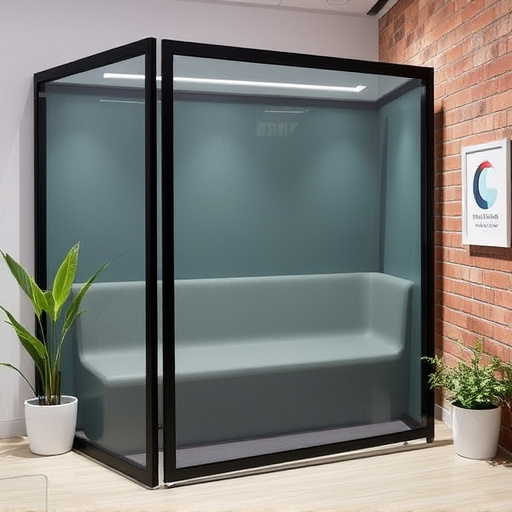Navigating sensor transfer challenges in cold air intake (CAI) installations requires addressing diverse sensor needs, environmental impacts, and precise adjustments. Professionals must integrate various sensors with unique requirements into a unified system, considering power, communication protocols, and physical dimensions. Temperature fluctuations and harsh conditions during installation pose additional obstacles, affecting sensor performance and longevity. Overcoming these complexities demands specialized knowledge, systematic planning, compatibility checks, detailed guides, visual aids, reliable sensors, and manufacturer updates to ensure successful data transfer and optimal engine performance while adhering to emission standards. The high difficulty level of CAI installations underscores the importance of meticulous approach for accurate results.
Sensor transfer difficulty, particularly in complex automotive systems like Cold Air Intake (CAI) installations, can lead to performance issues and inefficient engine operation. This article delves into the challenges and causes of sensor transfer problems during CAI installations, offering a detailed case study on the high difficulty level associated with this process. We explore practical strategies to overcome these obstacles, ensuring optimal sensor functionality and engine performance.
- Understanding Sensor Transfer: Challenges and Causes
- Cold Air Intake Installation: A Case Study of Sensor Transfer Difficulty
- Strategies to Overcome and Mitigate Sensor Transfer Issues during Installation
Understanding Sensor Transfer: Challenges and Causes

Understanding the complexities of sensor transfer is crucial, especially when tackling a task like cold air intake (CAI) installation. The process involves seamlessly integrating sensors into a system, ensuring they accurately monitor and communicate data. However, this seemingly straightforward task presents various challenges and causes that can hinder its success, particularly at the difficulty level associated with CAI installations.
One of the primary issues lies in the diverse nature of sensor types and their unique compatibility requirements. Different sensors have varying power needs, communication protocols, and physical dimensions, making universal integration a complex task. Additionally, environmental factors, such as temperature fluctuations and exposure to harsh conditions during installation, can impact sensor performance and longevity. These challenges demand careful consideration and often require specialized knowledge to navigate, ensuring the successful transfer of data without compromise.
Cold Air Intake Installation: A Case Study of Sensor Transfer Difficulty

Cold Air Intake Installation presents a compelling case study for the challenges of sensor transfer, highlighting the complexity at a fundamental level. This process involves replacing the stock air intake system with a cold air intake (CAI) design, intended to enhance engine performance by delivering cooler and denser air. However, this seemingly straightforward modification can significantly impact the accuracy and functionality of sensors crucial for engine management systems. The CAI’s direct route from the atmosphere often introduces new variables such as temperature fluctuations, humidity, and varying airflow patterns, all of which can disrupt the delicate balance maintained by these sensors.
The difficulty level in transferring sensors during a cold air intake installation escalates due to precise timing requirements and the need for meticulous calibration. Sensors like the Mass Air Flow (MAF) sensor, crucial for measuring incoming air volume, must be re-calibrated post-installation to account for changes in airflow dynamics. Furthermore, temperature sensors may require reprogramming to accurately read and interpret temperature shifts resulting from the cold air intake’s design. These adjustments are vital to ensure the engine continues to operate efficiently and within emission standards, underscoring the technical expertise needed for such modifications.
Strategies to Overcome and Mitigate Sensor Transfer Issues during Installation

Overcoming sensor transfer issues during installation requires a systematic approach, especially for complex systems like cold air intake (CAI) setups. One effective strategy is meticulous planning and preparation. This includes ensuring proper tools are on hand, double-checking compatibility with existing systems, and creating a detailed step-by-step guide tailored to the specific CAI model. Taking the time to understand the unique challenges posed by each sensor’s transfer process can significantly reduce installation difficulty levels.
Visual aids and clear instructions are invaluable. High-quality diagrams and videos demonstrate precise sensor alignment and connection procedures, minimizing errors. Additionally, using readily available sensors known for their reliability and compatibility with CAI systems streamlines the installation process. Regular updates on vehicle-specific requirements and troubleshooting guides from manufacturers can also help mitigate unforeseen issues, ensuring a smoother transfer experience.
The article explores the intricate challenges posed by sensor transfer difficulties, particularly in the context of cold air intake (CAI) installations. By delving into the underlying causes and presenting a case study, we highlight the complexities that automotive enthusiasts and mechanics often face. Through effective strategies, such as pre-installation checks and precise alignment, these issues can be successfully mitigated. Understanding and addressing sensor transfer problems are key to ensuring seamless CAI installations, ultimately enhancing vehicle performance and reliability.














